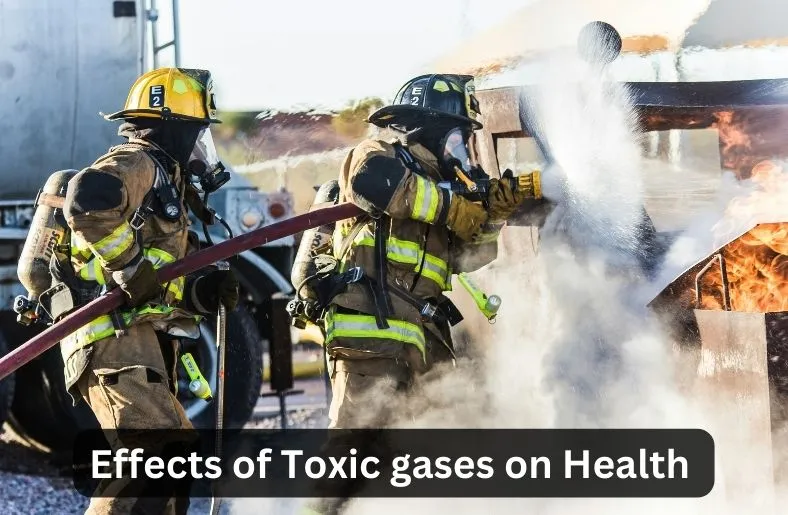Firefighters, revered for their bravery in safeguarding communities, are now confronting Aqueous Film Forming Foam (AFFF) manufacturers over alarming health risks. AFFF, long hailed for its prowess in extinguishing flammable liquid fires, faces scrutiny due to its composition, notably per and poly-fluoroalkyl substances (PFAS).
This emerging evidence implicates PFAS in grave health concerns such as cancer, immune system disorders, and reproductive issues. The firefighting community’s battle for accountability signals a pivotal shift in prioritizing safety amidst the longstanding reliance on AFFF.
In this article, we explore the firefighters’ movement seeking justice and safety by challenging AFFF manufacturers.
The Link Between AFFF and Cancer
The association between AFFF and cancer has become a focal point of concern and investigation. AFFF contains PFAS often referred to as “forever chemicals” due to their persistence in the environment and the human body.
Studies have identified PFOA and PFOS, common compounds in PFAS, as cancer-causing agents. The International Agency for Research on Cancer (IARC) categorizes PFOA and PFOS as “carcinogenic to humans” and PFOS as “possibly carcinogenic to humans.”. These studies have shown correlations between PFAS exposure and various cancers.
Studies have also shown that exposure to PFAS can lead to various types of cancer, including kidney and testicular cancer. Regular and prolonged exposure to firefighting foam during firefighting activities increases the risk due to toxic chemical accumulation.
This accumulation occurs in the bodies of firefighters, contributing to heightened health risks.
The Movement of Firefighters Seeking Accountability
With mounting evidence linking firefighting foam exposure to cancer, firefighters nationwide are rallying to hold manufacturers accountable. They’ve initiated numerous lawsuits against firefighting foam producers, claiming inadequate warning about the health risks.
These legal actions are driven by firefighters diagnosed with cancer seeking accountability for their illnesses. Firefighters are pursuing compensation for medical costs, lost income, and the emotional toll of their suffering.
TruLaw states that in a significant development, all AFFF lawsuits in federal courts are consolidated into a Multidistrict Litigation (MDL) in South Carolina. This centralization aims to streamline the legal process and ensure consistent rulings. As of June 1, 2024, over 8,270 cases are pending in the MDL.
In the AFFF lawsuit, plaintiffs also attribute responsibility to manufacturers for groundwater and soil contamination. AFFF use at military bases, airports, and firefighting sites has caused widespread groundwater contamination and soil pollution from PFAS accumulation. Also, PFAS bioaccumulation in plants and animals raises concerns about elevated concentrations in the food chain, posing risks to human health.
Challenges and Obstacles
One of the primary hurdles is the complexity and cost of litigation. Establishing the direct correlation between AFFF exposure and health conditions in court necessitates substantial scientific evidence and expert testimony interpretation.
Also, governmental agencies are often slow to revise safety standards or enforce stricter regulations on PFAS chemicals due to bureaucratic obstacles. Besides, legal disputes against formidable corporate entities can endure for extended periods and prove financially burdensome due to their substantial resources.
These factors compound the challenges faced by firefighters seeking accountability from the manufacturers.
According to NPR, The National Cancer Institute found that the average cost of medical care and drugs after a cancer diagnosis surpasses $42,000 annually. Certain treatments may even reach costs exceeding $1 million. Additionally, researchers uncovered that cancer patients were 2½ times more likely to declare bankruptcy compared to individuals without the disease.
However, despite these obstacles, the determination and solidarity among firefighters continue to drive their pursuit of justice and safer working conditions.
Progress and Victories
Despite considerable challenges, the movement to hold AFFF manufacturers accountable has made significant strides and secured noteworthy victories. Legal actions have resulted in substantial settlements and prompted regulatory reforms, underscoring an increasing acknowledgment of the health hazards linked to firefighting foam.
These achievements mark crucial progress in the ongoing efforts to ensure accountability and safeguard public health.
In April 2024, The New Lede reported Tyco Fire Products reached a $750 million settlement regarding claims concerning its firefighting foam. The foam was accused of contaminating drinking water with harmful PFAS chemicals over several decades. Upon approval, about 7,000 to 8,000 US public water systems could receive funds to treat contaminated drinking water, addressing PFAS contamination consequences.
Also, EWG reported that the EPA’s new standards aim to benefit North Carolina residents by targeting six notorious PFAS chemicals. The standards, termed maximum contaminant levels (MCLs), establish limits from 4 to 10 ppt for diverse PFAS compounds in drinking water.
This achievement is a major win for public health. However, it could take up to five years for full implementation, urging interim filtration for affected communities.
These developments reflect the growing momentum of the firefighters’ movement and the tangible impact of their efforts to protect their health and safety.
Looking Ahead
As firefighters continue to advocate for accountability and safer working conditions, the path forward involves both challenges and opportunities. The growing body of scientific evidence and successful litigation outcomes have created a stronger foundation for future actions against AFFF manufacturers.
The focus will be on ensuring that regulatory changes are effectively implemented and enforced. There is also a pressing need for continued research into safer alternatives to AFFF, with some promising developments already underway.
Also, ongoing education and advocacy efforts are vital. Firefighter unions and health organizations intensify campaigns to raise awareness of PFAS risks and advocate for legislative actions across states and federally. By maintaining pressure on manufacturers and regulators, firefighters aim to secure a safer future for themselves and the communities they serve.
Also write > Navigating Your Legal Rights Following Adverse Medicine Effects on Your Health
Frequently Asked Questions
How long has the link between AFFF and cancer been known?
Scientific research has long acknowledged the connection between AFFF and cancer, underscoring the health hazards linked to PFAS exposure. Studies have consistently shown an elevated risk of cancer among firefighters exposed to these chemicals.
What are the chances of firefighters winning their lawsuits?
Firefighters’ lawsuit outcomes against AFFF manufacturers hinge on evidence, legal representation, and judicial interpretation. However, recent settlements associated with AFFF provide grounds for cautious optimism.
What legal action are firefighters taking against AFFF manufacturers?
Firefighters are filing lawsuits against AFFF manufacturers, alleging negligence in addressing health risks associated with their products. These legal actions seek compensation for medical expenses and lost wages while advocating for stricter safety regulations.
A Persistent Fight for Justice and Safety
Firefighters’ pursuit of accountability from AFFF manufacturers showcases their resilience and commitment to safety. Despite challenges, their endeavors have yielded legal victories and heightened awareness of PFAS risks. Regulatory reforms and increased research funding signal progress toward a safer future. Advocacy and legal action are crucial as firefighters lead the charge for corporate accountability and public safety, shaping a healthier industry.





